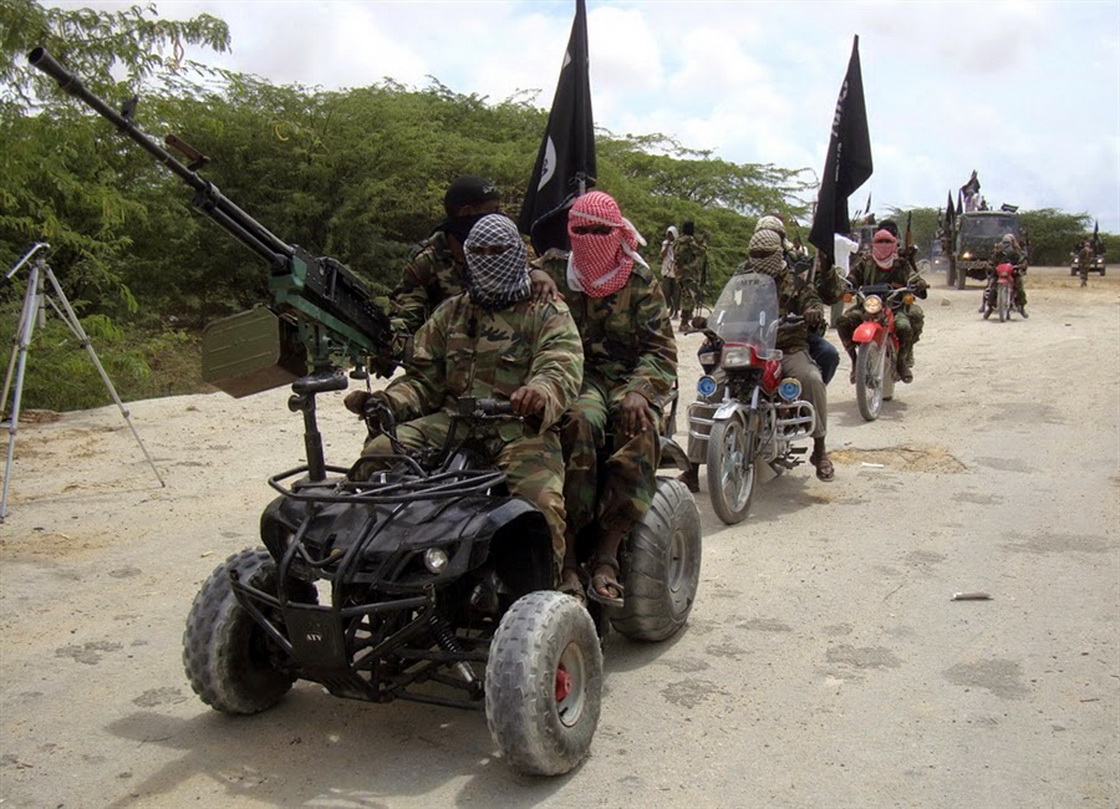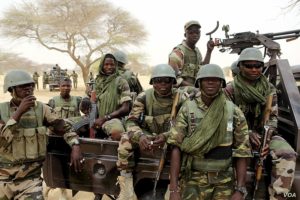 CC Image Courtesy of Think Defence https://creativecommons.org/licenses/by-nc/2.
CC Image Courtesy of Think Defence https://creativecommons.org/licenses/by-nc/2.
Boko Haram: The Case for Cautious Optimism
June 10th’s attack killing 81 people serves as a sober reminder of Boko Haram’s harsh capabilities. Boko Haram has garnered international attention through brutal tactics, including mass kidnappings and utilizing women and children as suicide bombers. While recent attacks have continued between the insurgents and governments represented in the regional Multinational Joint Task Force (MNJTF), signs of progress suggest efforts have been effective at countering the extremists.
At a Glance
Since its inception in 2002, it is estimated Boko Haram has caused over 38,000 deaths and displaced roughly 3 million people. Created by Mohammed Yusuf in 2002, the group aims to topple the Nigerian government and establish its own government based on Islamic law. Boko Haram’s name translates to “western education is forbidden,” and the group is believed to have between 4,000 and 6,000 militants. Boko Haram continues to operate in Western and Central Africa, particularly in the Lake Chad region. In response to Boko Haram’s terror activities, the governments of Benin, Cameroon, Chad, Niger, and Nigeria remodeled the MNJTF to combat the violent extremism.
The U.S. State Department labeled Boko Haram a foreign terrorist organization in November 2013, and the group gained international condemnation when it kidnapped 276 schoolgirls in April 2014. The next year, Boko Haram pledged allegiance to the Islamic State of Iraq and Syria (ISIS) and began using the name the Islamic State West African Province (ISWAP). However, the group soon splintered into two main factions, one led by Abubakar Shekau, and the other, ISWAP, led by Yusuf’s son Abu Musab al-Barnawi. ISWAP focuses primarily on attacking “Nigerian military and government agents.” Shekau’s faction targets anyone, including Muslims, who do not adhere to its extreme ideology. The falling-out is believed to be caused by ISIS choosing al-Barnawi to lead ISWAP.

Schoolgirls in Guinea protesting the Chibok schoolgirl kidnapping by Boko Haram. Source: UNICEF Guinea https://creativecommons.org/licenses/by-nc/2.0/
Unique Tactics
Similar to other terrorist organizations, Boko Haram employs tactics ranging from recruiting impoverished individuals to attacks on government and public buildings. What differentiates Boko Haram from other organizations is its strategy of kidnapping women and children and forcing them to carry out suicide attacks. Boko Haram has utilized this approach since the Chibok schoolgirl kidnapping of 2014 and has continued to do so as recently as January 2020. Over the last five years, Boko Haram represents roughly 80% of female suicide attacks globally. Originally used as a negotiating chip to free Boko Haram prisoners, Shekau shifted his strategy of kidnapping women and children to utilizing them as suicide bombers when he realized they had easier access for carrying out Boko Haram’s missions. Fortunately, in the last few years, “the number of women involved in suicide attacks has declined at a rapid rate.”
Major Events in 2020
In January, Boko Haram began the new year by attacking and killing over 50 fishermen on an island on Lake Chad. It is believed the group then utilized an improvised explosive device (IED) on a bridge in Borno state in northeast Nigeria, resulting in more than 30 civilian casualties. Roughly two weeks later, a female suicide bomber claimed the lives of 9 civilians in western Chad. The next month witnessed Boko Haram ambush travelers stuck between roadblocks, killing at least 30 people. Following the attack, Nigerian President Muhammadu Buhari stated Boko Haram was “clearly on the back foot.”
However, March proved successful for Boko Haram’s operations when it defeated 47 Nigerian and 92 Chadian soldiers in orchestrated attacks on the same day. This marked the most lethal attack on Chadian troops to date, frustrating Chad’s President Idriss Deby at the lack of assistance from other MNJTF member nations. In retaliation, Chad launched an offensive operation which it claims resulted in 1,000 Boko Haram insurgents being killed. However, it is worth noting the challenges of knowing how many Boko Haram militants are killed in attacks. Gathering data on this is difficult as Boko Haram is not forthcoming with information, and government forces likely inflate numbers to spur momentum against the terror group.
In May, Nigeria killed 134 combined members of Boko Haram and ISWAP while seizing a large cache of ammunition. Boko Haram experienced an additional 75 losses in two operations conducted by Niger troops in southeast Niger, and coalition forces in northeastern Nigeria. The terrorist organization retaliated with multiple attacks on civilian and military groups. The end of May was marked by one of Boko Haram’s leaders surrendering to MNJTF forces, and suggesting “more fighters are ready to surrender.”
Boko Haram is suspected of having attacked a northeastern Nigerian village, leaving 81 killed, and capturing 7 civilians. A few days later, dual ISWAP attacks struck a United Nations humanitarian hub and police station in the same region. The two attacks left over 60 civilians and military personnel dead.

Niger’s special forces prepare to fight Boko Haram in Diffa, March 26, 2015. Source: VOA.
Future Outlook
Since its inception in 2002, Boko Haram has been able to “capitalize on regional instability” to advance its ideological objectives. Political, economic, climate, and food insecurities all aid Boko Haram’s efforts towards recruitment and propaganda. The group has yet to release roughly half the Chibok schoolgirls it took in 2014 and is likely pleased with Chad’s president announcing his country’s military will no longer be participating in operations beyond its borders. The months ahead may also prove challenging as Boko Haram has historically experienced greater success in rainy months.
While there is still ample work to be done in hindering Boko Haram’s plans, the combined regional militaries of the MNJTF have demonstrated success. Near the peak of its operations, Boko Haram “controlled an area of Nigeria equivalent to the size of Belgium.” Now, its area of control is a fraction of what it once was. New audio of its leader Abubakar Shekau suggests Boko Haram is having difficulties combating the MNJTF. According to the Council on Foreign Relations’ “Tracking Boko Haram With the Nigeria Security Tracker,” Boko Haram-caused deaths against civilian and military targets in 2019 had increased 7% since 2018. The increase in fatalities was primarily due to rising attacks against MNJTF forces. However, viewing these numbers on a broader scale shows the number of deaths was reduced by 75% since the group’s height in operations in 2014. So far in 2020, the number of deaths inflicted by Boko Haram is down 88% since its peak of operations in 2014. Unfortunately, that percentage will undoubtedly decrease as the year continues. By projecting the total deaths caused by Boko Haram in 2020 by doubling the current number, the number of fatalities inflicted by the end of the year would decrease 1% from 2019, a 76% reduction since 2014.
These developments illustrate the successes a unified response can have against a terrorist organization. However, for continued success, all MNJTF parties and the international community will need to stay persistent in their endeavors.





